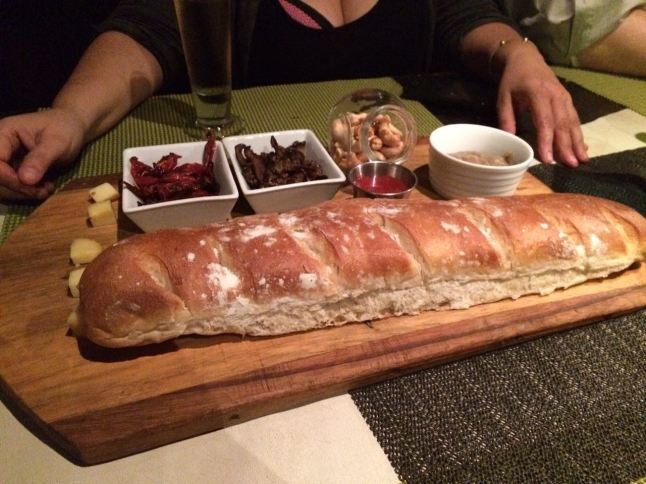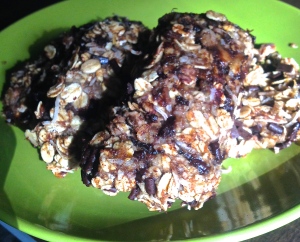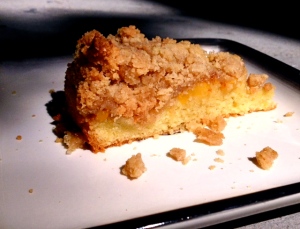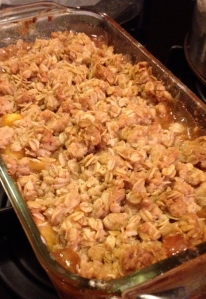On Monday, I followed the ASA team and bopped down to San Miguel area to meet with the field techs and hear their plans for the next year. I zoned out a lot when they began talking about expenses and budgets, but managed to understand a few key things about what’s going on in the field:
- Sometimes the people in charge (ASA) don’t really know what’s going on. So sometimes it’s good to listen to the field techs.
- Sometimes the field techs don’t know what’s going on, so sometimes it’s a good idea to prepare recommendations before coming to the table, instead of disagreeing and compromising at the meeting.
- Sometimes, no matter what you do, the farmers kind-of like the experimental plot, and don’t want to keep their traditional/conventional farming plots as the control. They see that better management practices actually lead to healthier plants, and so they’ll do away with their traditional plot and adopt those sustainable practices for the entire parcel of land. Awesome for the farmer, kind of a loss for the whole experiment/science part of it, but I guess you can’t really complain too much about this kind of change.
There is a purity in the brute-force experimentation that the team here is encouraging; pared plots or before-and-after plots and making decisions on the fly. The goal is purely to encourage better practices, but they’re already seeing results in yield and plant health. TBD for soil health and fertility (that’s where I’m helping out!).


This Saturday was the fourth annual Festival de Cacao in Caluco. We drove to this small town in Sonsonate, where cacao producers and processors had gathered to celebrate their product. We went on a tour to see the the cacao plant go from bean to chocolate, with grafting cacao trees to fermenting the beans to roasting and then creating a delicious nugget of chocolate. Cacao has recently seen a revival in El Salvador. What used to be an important cultural food, and even an economic crop (beans were used as currency at one point), dwindled out of the mainstream. It’s incredible to see the farmers sharing information and learning from each other at these events. Cacao is once again empowering them economically and creating a more sustainable agro-forestry landscape.


In addition to a beautiful drive home, the day culminated in a lot more sugar than I have been used to eating, but I had to try all of the chocolate products! And I stumbled through the door of my house buzzing with sugar and a bag full of everything from cacao soap to a chocolate bar of 100% cacao.
And my little garden I planted in the back of my house has little beans growing! And little radish sprouts! The herbs in the back look healthy. I added a layer of organic worm castings to the soil so that the new baby plants could take advantage of some additional nutrients. I took a huge back of rice casings from the cacao festival to use as fertilizer in the garden, soon to be added– the scraps maintain humidity in the soil while also acting as a fertilizer, and prevent erosion of that important topsoil.
I’ll take the Festival de Cacao as my Halloween experience for the year, thankful that chocolate is in my life, but doesn’t need a repeat for Monday’s holiday.


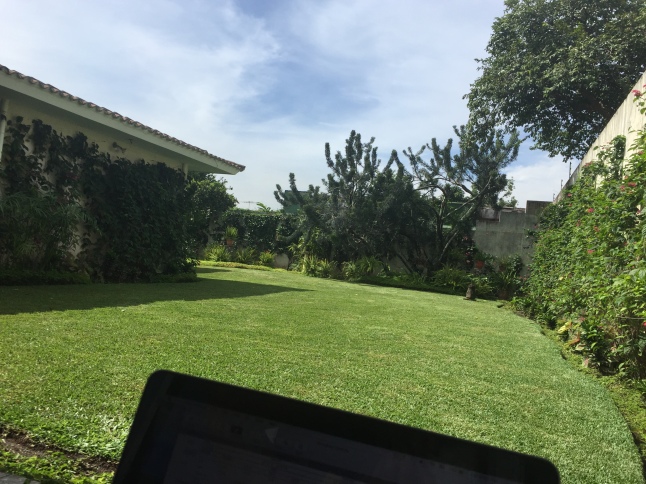

 It was also their neighbor’s birthday, so we went to his house, which had a dreamy infinity pool overlooking the densely vegetated cliffside.
It was also their neighbor’s birthday, so we went to his house, which had a dreamy infinity pool overlooking the densely vegetated cliffside. 




